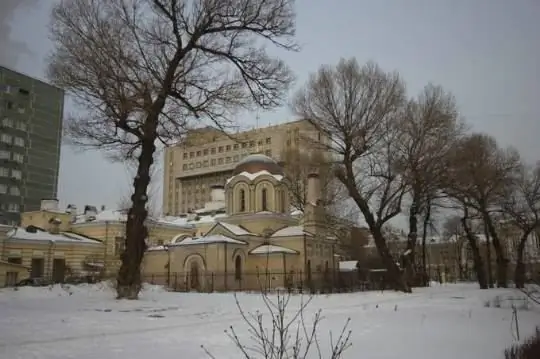
Description of the attraction
At the end of the 19th century, a Clinical Town was organized on Devichye Pole, where the clinics of the Medical Faculty of Moscow University were located. Later, the faculty was transformed into the First Medical Institute. Now the educational institution bears the name of the scientist Ivan Sechenov, and on its territory is the Church of Dimitry Prilutsky. In the late XIX - early XX century, the church was a chapel that stood on the alley of the town. In the chapel, the funeral service was given for those who died in the hospitals of the town.
Funds for the construction of the town were allocated by the emperor and Moscow merchants. One of them, Dmitry Storozhev, who lived near the Clinical town, financed the construction of the church, but did not see the new church. Its construction was completed after the death of the donor. The construction was supervised by the architect Boris Kozhevnikov. The temple was consecrated in the name of St. Demetrius Prilutsky, whom the merchant Storozhev revered as his heavenly patron. The new church was consecrated in September 1903.
In the 30s, the temple was closed, at first a club and a gym were located in its building, and then the divisions of the medical institute - a laboratory and an oxygen station. They even wanted to demolish the temple and build a university canteen in its place. In the 90s, the building was returned to the church. Restoration work began, in which the doctors themselves took part. The consecration of the renovated church took place in 2002.
Among the shrines of the temple there is a particle of the relics of the holy healer Panteleimon, as well as two icons of the Mother of God - Theodorovskaya and Jerusalem. The latter was preserved in the basement of the church, and during its restoration it turned out that it was consecrated at the beginning of the last century in Jerusalem on the Holy Sepulcher.






